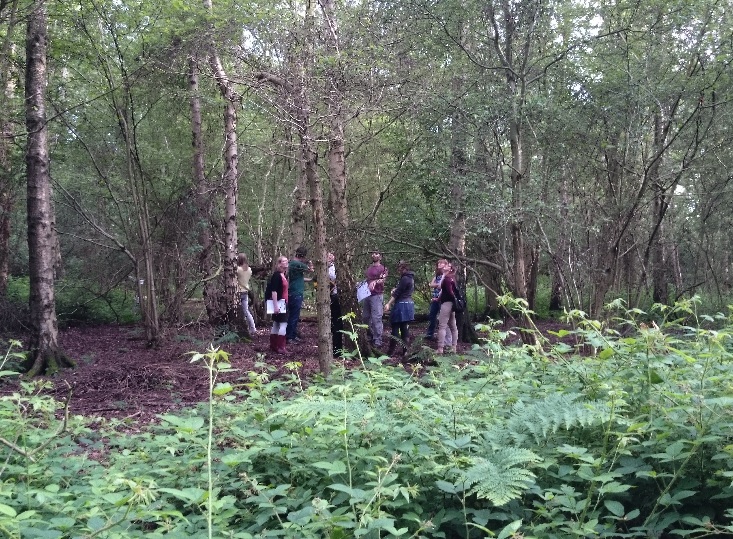
Two workshops have now taken place in Loughborough that is bringing together people from Loughborough to explore how we mark, record, understand and respond to climate change in our everyday lives.
The first session was an introduction to the project, I took along the life-sized cardboard version of the machine to show people what the artwork will look like when it is exhibited at Pilkington Library (on the University campus) and Loughborough Central Library. I also made fortune cookies again, with a plate for a different future scenario (increased consumerist society, a collective environmentally conscious society or continuing as we are). Each cookie (these were made with a Brazilian Empadinha recipe) had a ‘climate fortune’ inside that related to the future scenario.
After presenting and talking about the project and also introducing the research that my colleagues at the University of Nottingham are doing with me (into the impact of this work on our responses to and perceptions of climate change) I introduced the first activity which asked the group to discuss three questions and note down their responses onto paper discs (see some of the responses in the image/alt text above). The questions were:
1. How do we connect climate change and weather
2. How can we connect data and narrative
3. How do we mark and respond to these changes
The aim of this session was to start a very broad discussion about how we think and feel about the issues at the core of The Prediction Machine project.

The second session involved the group (with many new members) joining myself and Jon Millet, an ecologist based at Loughborough University, on a walk in the forest. Jon presented his research in the forest on Ash dieback, explaining how the forest will change in the future and how it has changed and evolved since it was cut down in the second world war. We then became ‘human sensors’ in the forest, enacting with our bodies how the weather stations that Jon is using to sense changes in the forest works (and how the weather station works that will control The Prediction Machine). To do this we wrote down on a scale between 1-10 what we thought the temperature, humidity, sound, light and air quality was. It was a lovely walk on a sunny day in this fascinating ancient forest that has been destroyed and regrown, half through planting and half naturally. We could feel a difference in light and environment between these two halves and very much felt the ongoing impact of the winter storms, where the soil (particularly on the replanted side of the forest that has less light reaching the floor below the tree canopy) is wet with mud and without heavy boots was nearly impassable at times. Jon told us that the soil here hasn’t recovered from the huge amounts of rain so any additional rain has just saturated the soil.
The next session will start to look at how we interpret that moment in the forest (and for people who missed the session their will be an opportunity to do their own human sensing), looking at other artists, writers, film makers interpretations of the environment and how it will change in the future we will begin to compose our predictions for what standing in the forest will feel like in 2044…
